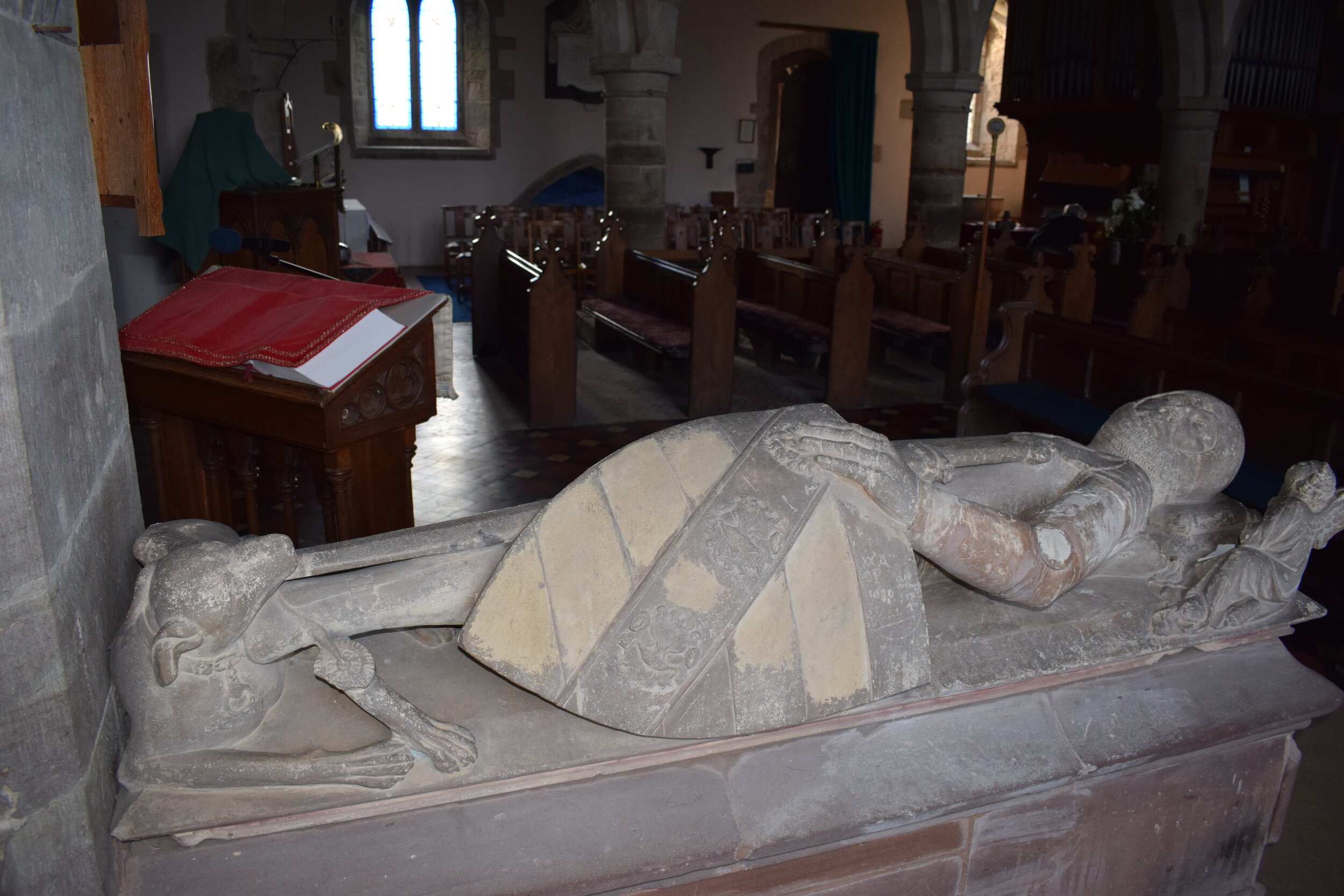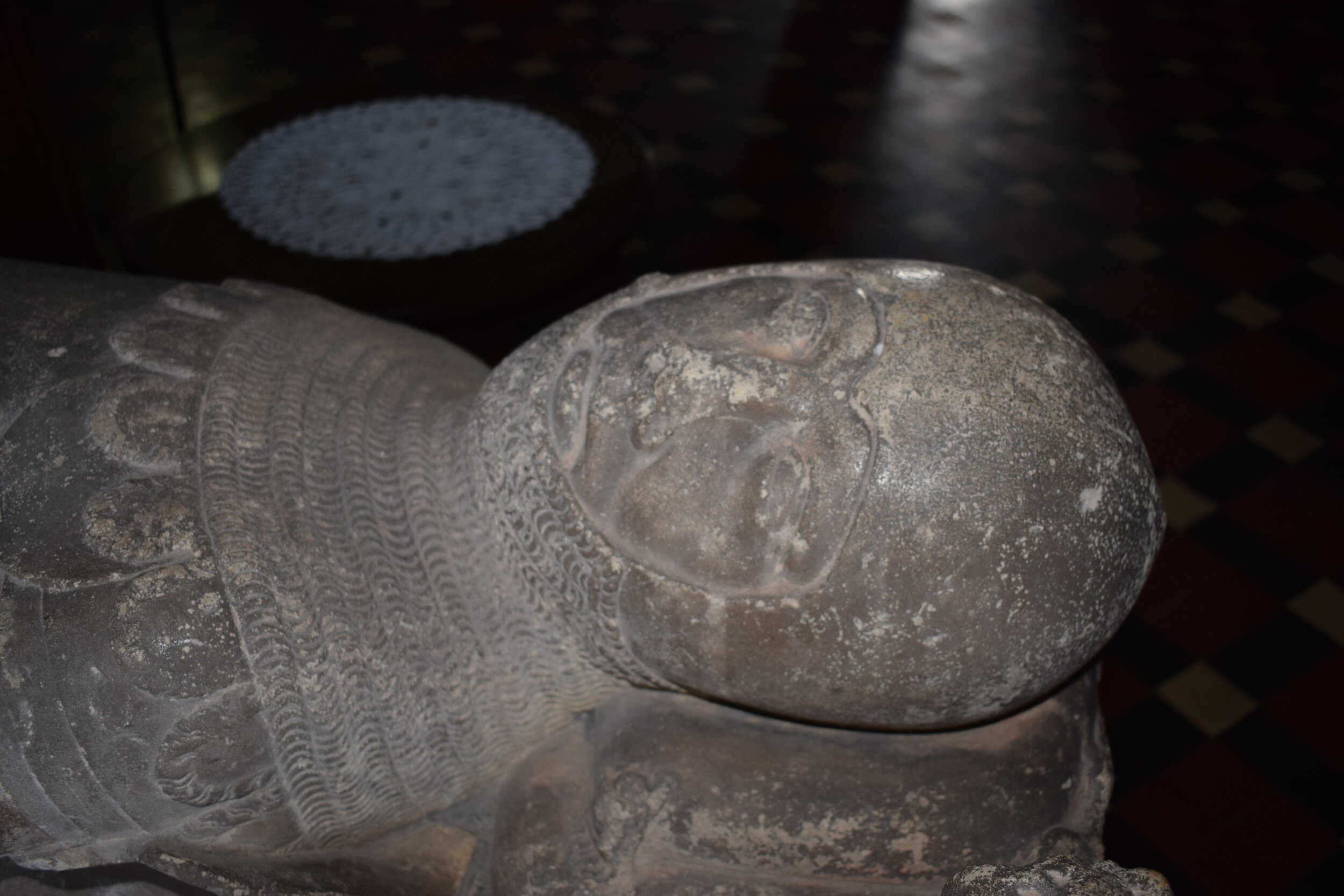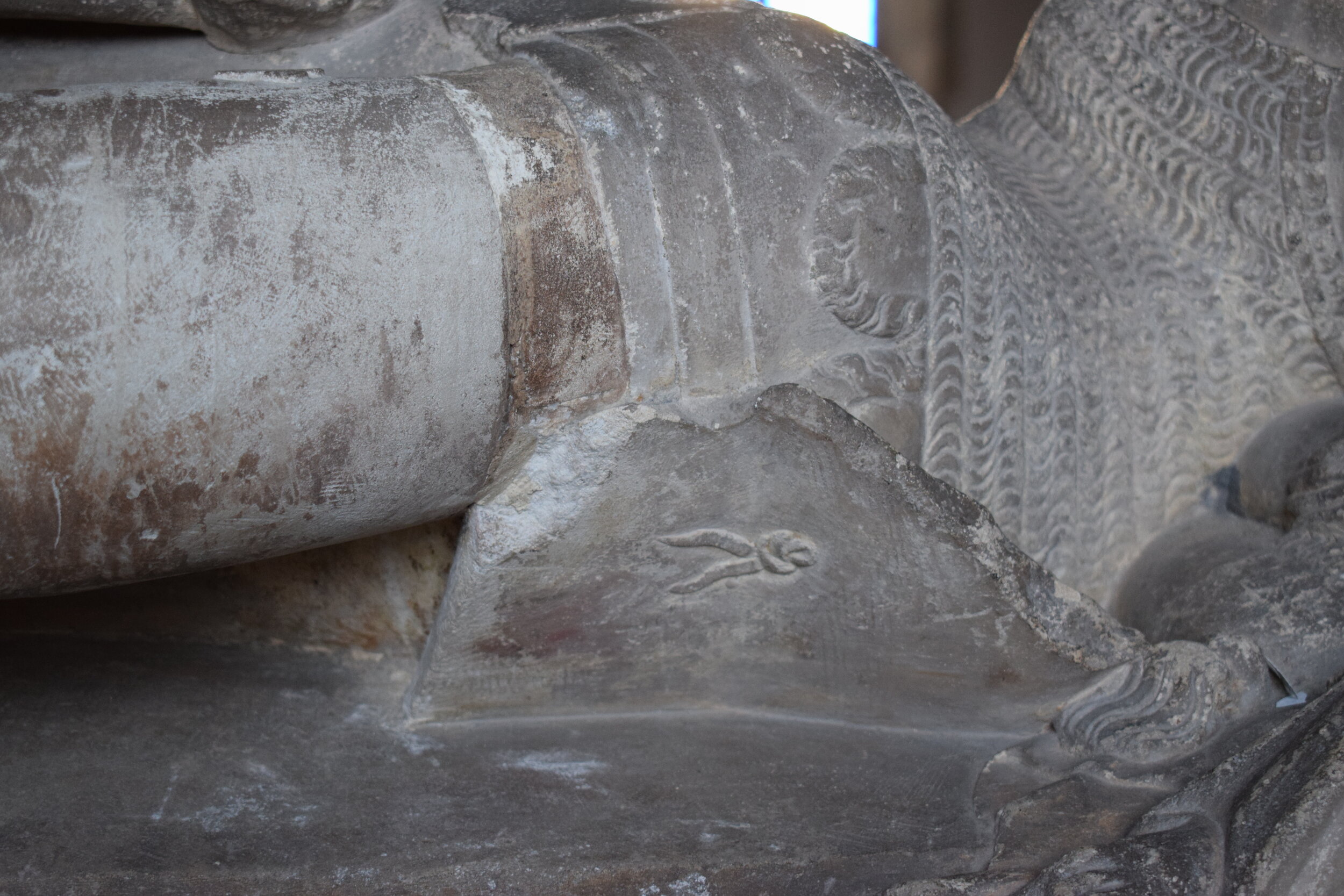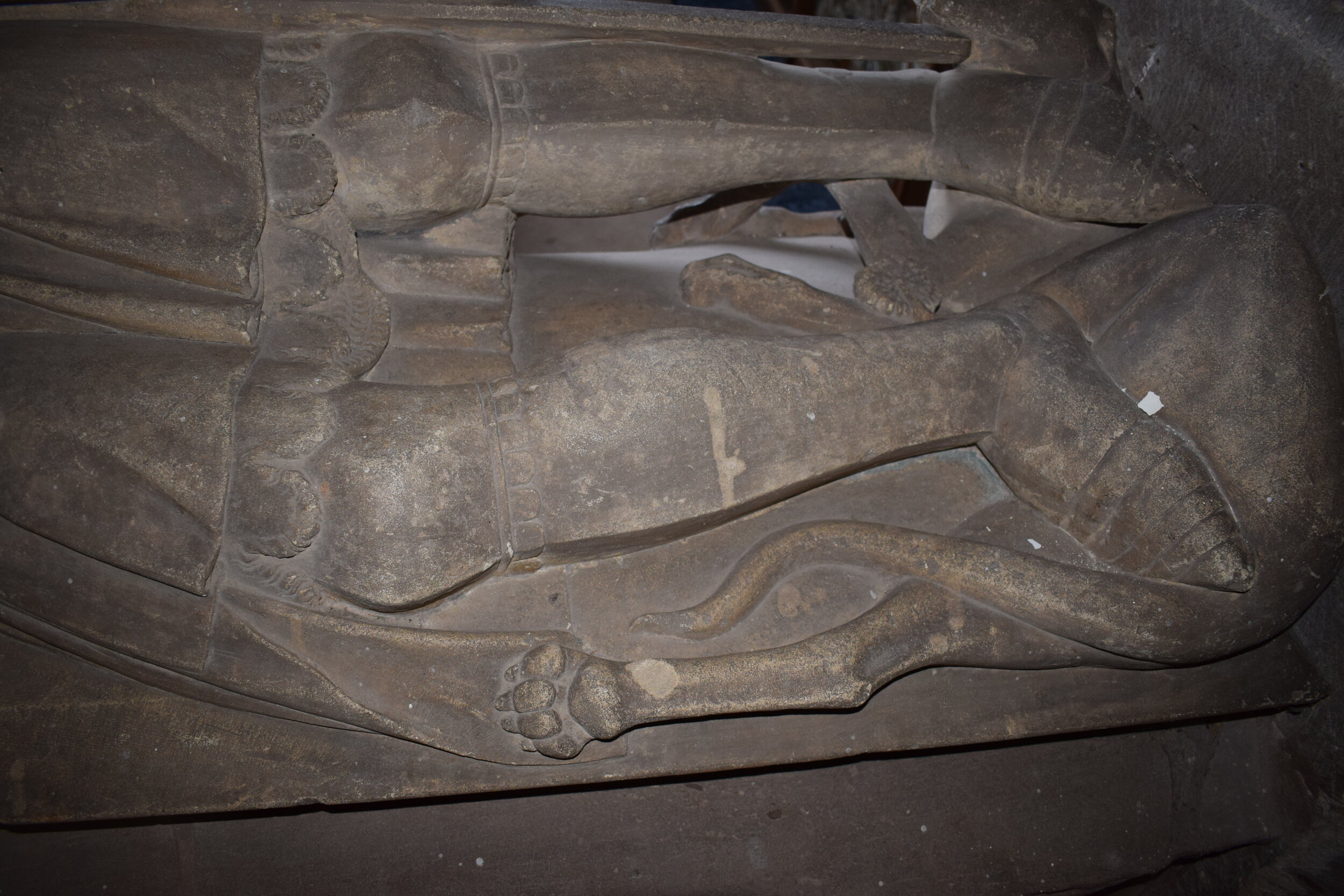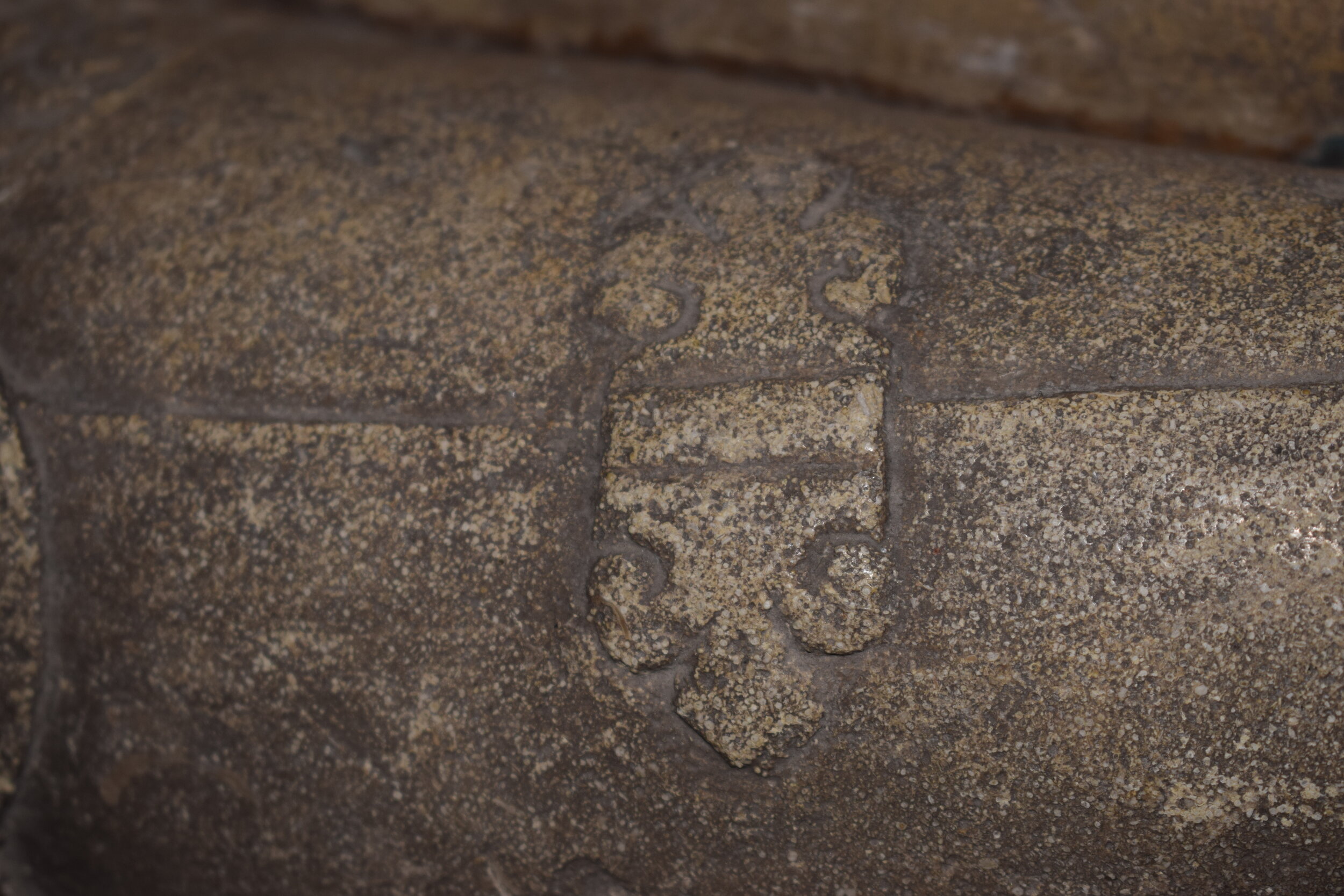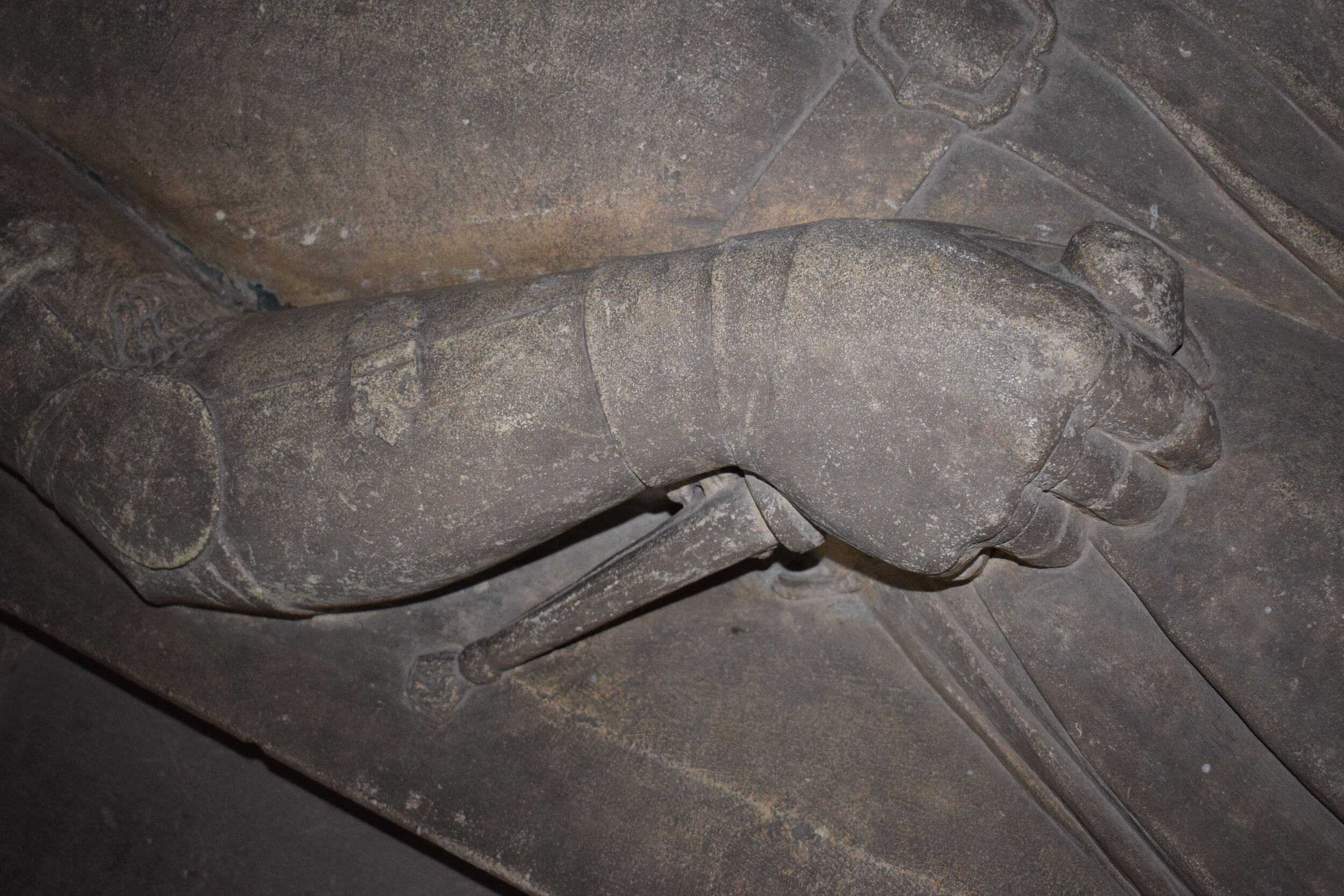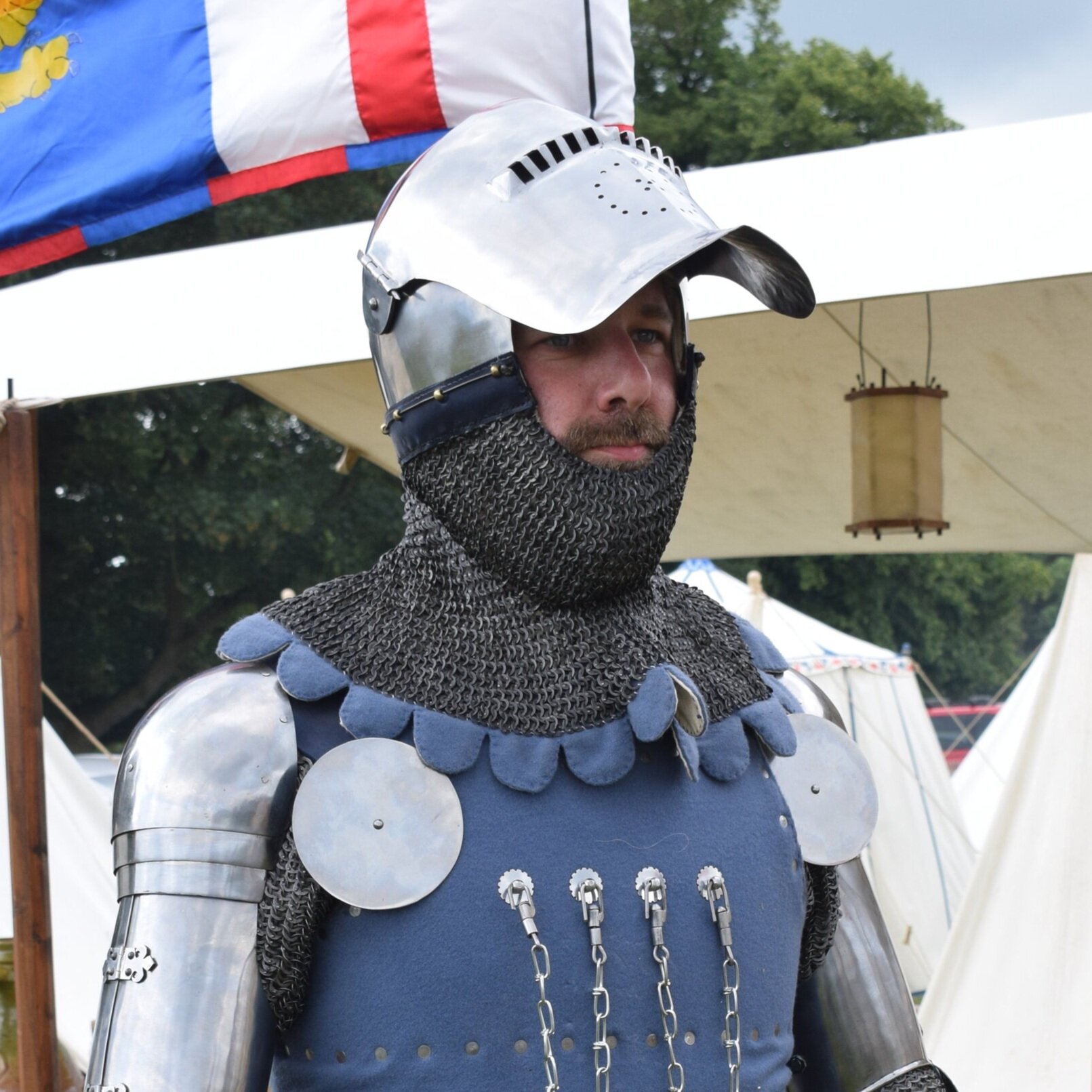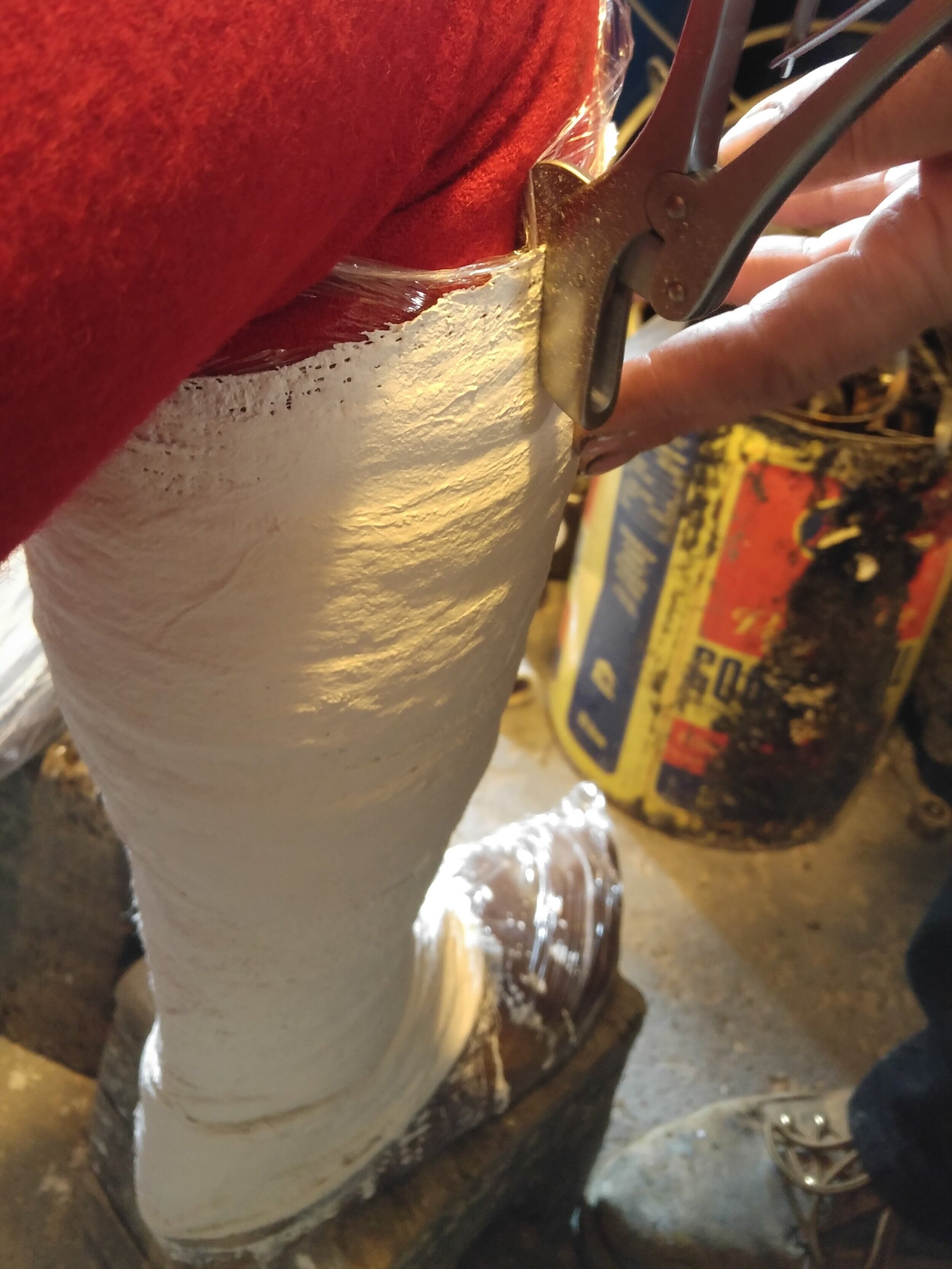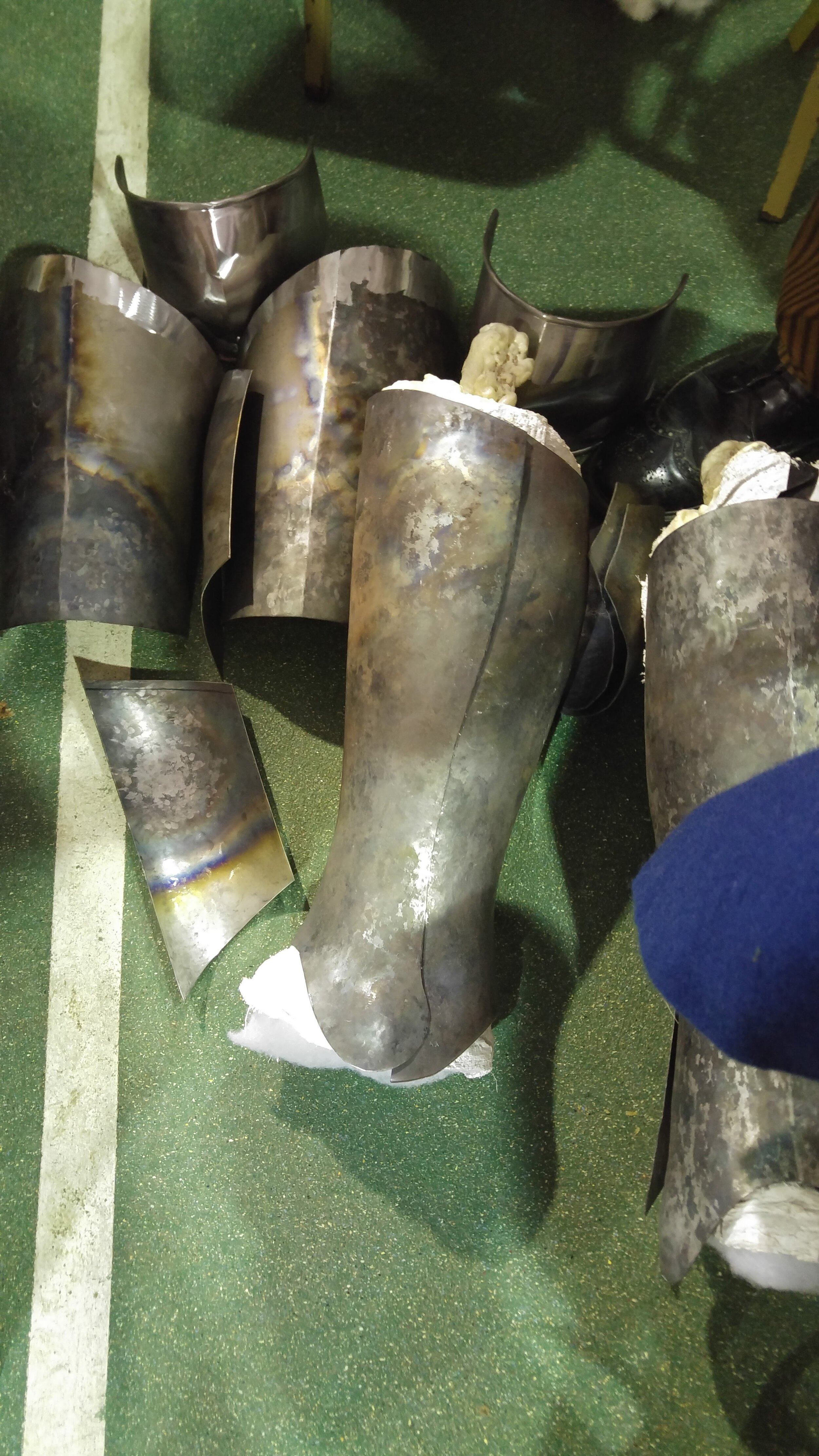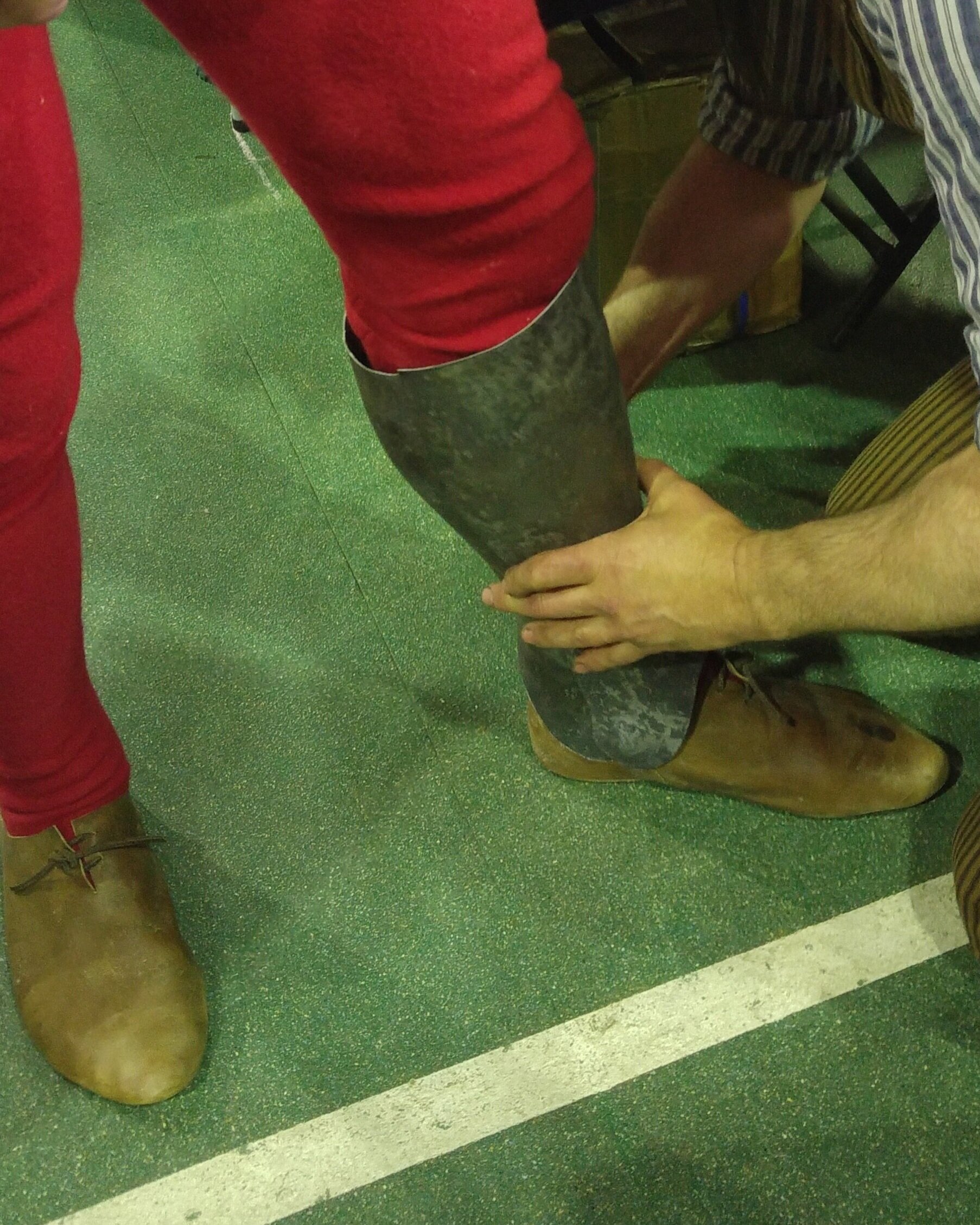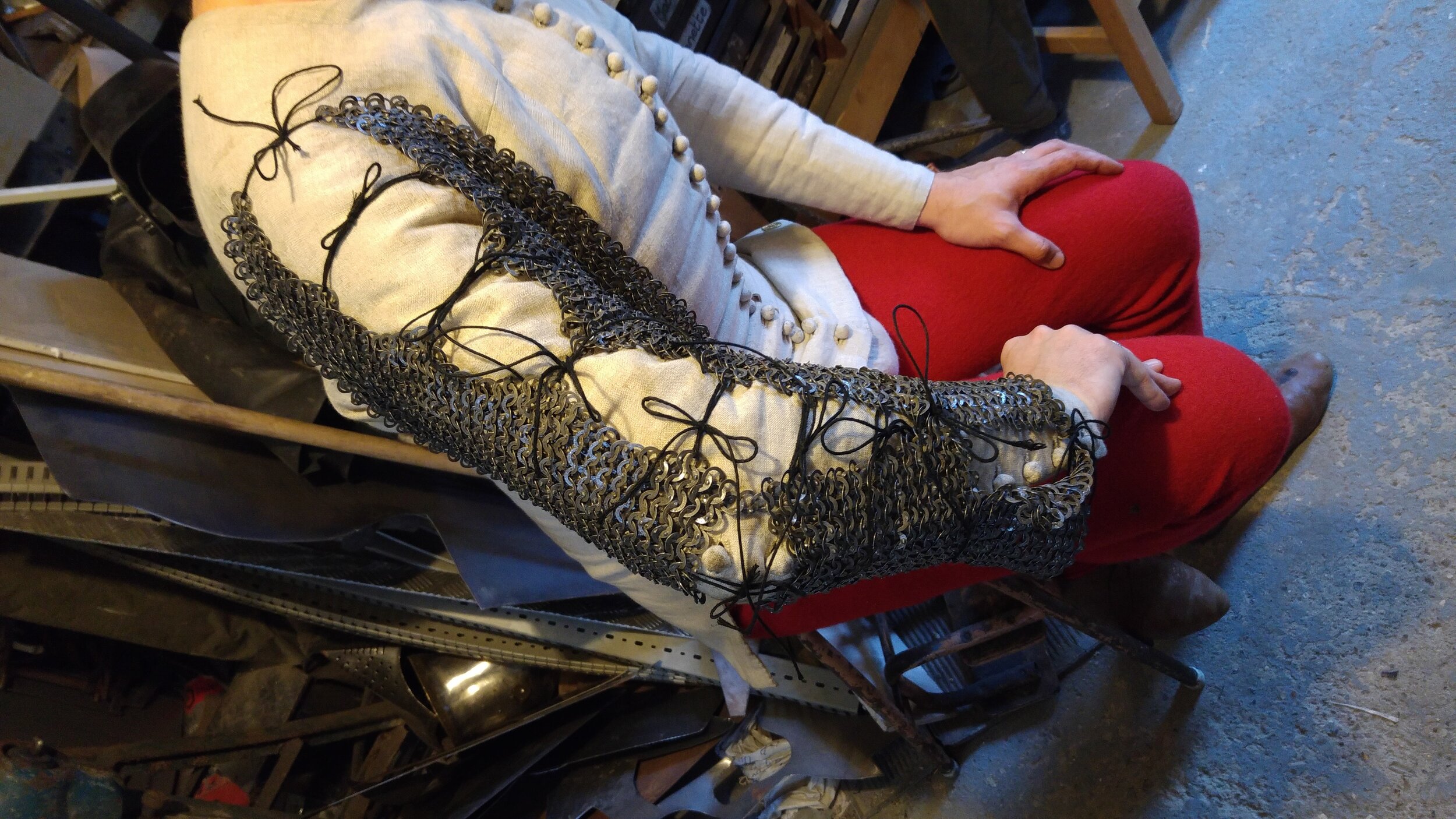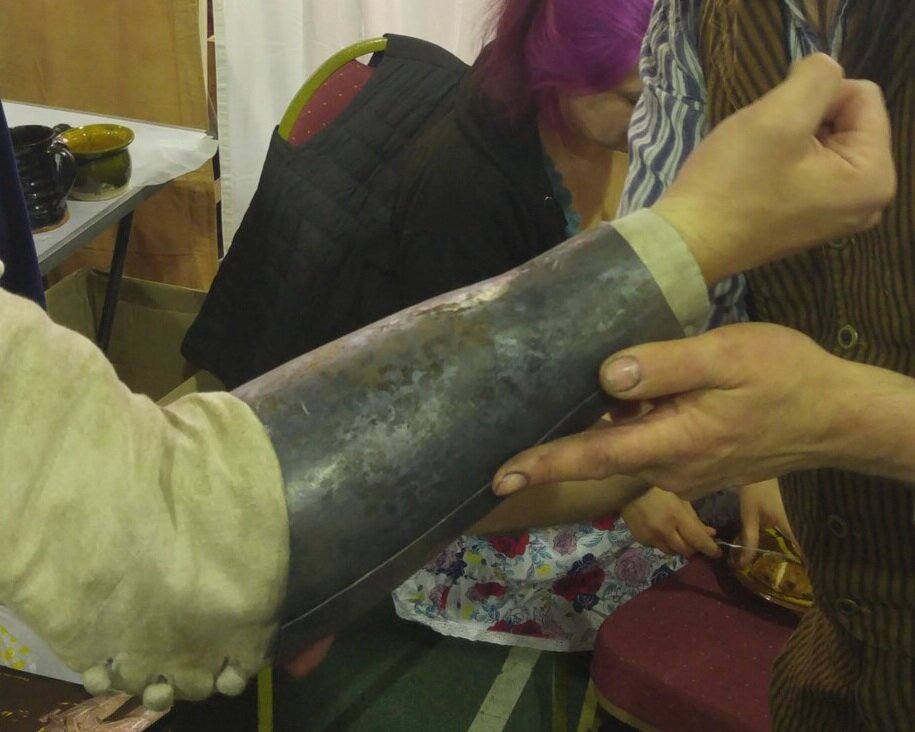This Historian’s Harness
Yours truly, a historian in harness
I’ve wanted a suit of armour since I was a little boy. When I got the chance I chose something quite unlike the traditional image of the medieval knight.
So how did I go about selecting this unusual harness?
Picking a date.
The first thing to be done was to pick a date. and this was determined by the group I was joining. Whilst I would have been quite happy in the late fifteenth century, with a group representing one of the households of the Wars of the Roses, I had always had a particular liking for the mid-fourteenth and early fifteenth century - the period of the Hundred Years War.
The Free Company of Aquitaine, warbow archers of the Hundred Years War.
Having looked at a lot of medieval reenactment societies and living history groups I had lit upon the Free Company of Aquitaine, a small group of individuals who shoot the heavy-weight medieval warbows. Their kit looked right, their attitude to living history and displays all fitted with how I looked at reenactment and living history after twenty-five years in the hobby. Best of all, they were open to having a new member, someone who was never likely to draw a hundred-pound draw-weight warbow, and who would be a ‘clankie’ (as those medieval reenactors with full armour tend to be called) in their ranks.
Two members were also thinking about getting their own armours from the period. One had been collecting pieces for an armour from the 1360s and 1370s - the period of the ‘Free Companies’, when independent companies of soldiers ravaged central and southern France and joined the wars between the Italian city-states. The other was looking at a full harness for an English man-at-arms on the field of Agincourt in 1415. Although only thirty years apart the changes in armour technology and fashion were great, and this could be reflected in the group’s public displays.
This helped narrow my options. I decided that I would provide an example of a man-at-arms from the earlier battles of the Hundred Years War, wearing a harness from the time of Crécy or Poitiers. It would be every bit as different from the armour of the others and would serve to show the dramatic changes over the whole period.
Finding an example.
The image that spawned an armour. (Joseph Foster, Some feudal coats of arms and others. (London, 1902) / http://effigiesandbrasses.com/646/852/)
The next step was to find an original source for the harness that I wanted. Unlike the fifteenth century, there are no complete armours left for the 1350s. For a sense of what was being worn by knights at the time one must turn to the artistic representations. This generally means the funeral effigies under which the knightly class chose to be buried, or the illuminations in period manuscripts depicting battle. They are not without their problems, especially their dating. Funeral monuments often lack any inscription as to who the individual buried beneath is meant to be. Time has almost inevitably robbed them of their painted heraldry (although some will have it carved into shield or surcoat, but that is less common than you might assume). Even if the family is known (because they are the local lords connected with the parish for example) that may not narrow down which individual the effigy belongs to. Heraldry passes down from father to son, after all, and so it can be hard to tell which generation lies beneath.
Where an effigy can be tied to a particular individual, there is a question as to what period in their life the armour come from. Are they being depicted in their youth, when they were an active knight? Is it armour contemporary to the date of their death, which might be thirty or forty years since they were actively engaged on the battlefield? Might the style post-date their death by years or even decades because the family never quite got around to having the effigy made, as was the case for one of the Paston family?
Artwork is no better, indeed it can be worse. Artists routinely depicted the individuals of the past in the dress and armour of their own day. So, we find depictions of knights at Poitiers in the armour of the fifteenth century, or biblical and classical heroes in the armour of the medieval present. It is also clear in some cases that the illustrator wasn’t being particularly careful to ensure the accuracy of their illustrations.
However, artwork and effigies remain our best resource, and so I turned to two rather excellent repositories of images - Effigies & Brasses and Armour in Art - both of which catalogue armour in a range of visual sources, looking for an effigy of English origin dating to around 1350. One in particular struck me: The effigy in Clehonger Church, just south of Hereford, said to belong to ‘an unknown Pembrugge’, but which the church identifies as Sir Richard Pembridge, father of the famous Sir Richard Pembridge, Knight of the Garter, whose tomb is in Hereford cathedral.
I will admit that it was the pen and ink drawing, with its austere and haunting face, that drew me to it, as well as the line of the helm he wore. The low-crowned bascinet with its prominent ridge and widow's peak was quite distinctive. So too were his gauntlets, rather different from the hourglass form that was to be prevalent ten years later. What we had here was an armour in transition, with both the bascinet and gauntlets being forms that were in use for a short period before a more recognisable and long-lived form replaced it.
Added to this his heraldry was very clearly carved onto his shield, and was a little different from the geometric pattern of the son's heraldry (this intrigued me, and led me to do some digging, but I’ll share that in another blog post).
Locality was also a factor. The effigy was close enough for a trip to the church itself, where lots and lots of pictures were taken, from as many angles as possible in order to give the armourer who was going to have to make the thing as good a sense of the armour's form and details of its embellishments as possible.
Finding an Armourer.
Kevin Legg of Plessis Armouries, working on the mail sleeves that go under my harness. His work is superb. (Kevin Legg)
So, having identified the armour I wanted to recreate the question was who was going to make it for me? Fortunately, we live in remarkable times, with a number of excellent armourers capable of producing authentically made and accurate reproduction pieces. It was a case of reaching out to a few and finding someone interested in the project, with space in their order book, and at price to suit my pocket.
Eventually I had a chat with Kevin Legg of Plessis Armouries. I’d seen his work before, and had been impressed. He was excited by the idea of doing something a little out of the norm and a full harness in one go, rather than a piece at a time, as many other reenactors do.
We met and chatted over the details of the project, the timeline, and other elements. We also talked about Kevin’s attitude toward accuracy and the process of armour making; his desire to do things as they had been done originally and to recreate the forms of the armour by close comparison with those few surviving elements and the images very much accorded with my own sense of how to approach the historical past.
Filling in the gaps
What lies beneath? There was no way to tell what kind of armour this knight was wearing beneath his surcoat. (Author’s image)
Whilst the effigy had plenty of detail in it, there were some really obvious gaps. The most obvious one was to determine what lay beneath his surcoat (actually, a cyclas, being shorter at the front than at the back). This is a common problem with effigies from the late twelfth through to the fifteenth century, where the knight’s torso is routinely covered in cloth - another vehicle for heraldic display, that probably has its origins in the desire to show off during the tournament (there’s another topic for a future blog post).
It is worse in the period I had chosen, as the developments in armour technology were so rapid that in the space of about forty years knights went from wearing mail shirts, through various forms of ‘pairs of plates’ - in which steel plates were rivetted to a cloth or leather garment - to solid breastplates. How was I to determine what was right for my chosen subject?
The answer was to go back to the effigies and to the visual sources, looking for hints as to what might have lain beneath the heraldic finery. Could we catch a glimpse of a breastplate beneath the surcoat? Was there an image in a romance of the knight donning his armour?
We also turned to the documentary courses. These are scant and often lack the kind of detailed description needed, but recent study of the Privy Wardrobe accounts of the Tower - where military equipment was purchased, stored and distributed - gave some more insights about what was available at the date I had chosen. It was Thom Richardson’s work that showed us that mail sleeves (as opposed to whole shirts) were being made and used at this early date. This meant that the mail could be stitched to the arming coat (that is the undergarment to which the arm harness would be attached) in sections, obviating the need for mail over the torso, which would be more than adequately protected by plate armour, thus reducing weight (and cost!)
One of the most frequent questions about the harness is ‘what are the chains for?’
Several English effigies about this time exhibited a peculiarity; two or more chains fixed to their chests. This oddity was supported by a number of European manuscripts of similar date, and surviving fragments of a pair of plates in the Bavarian army museum. These chains would be attached to sword, dagger, and great helm, to stop them being lost in battle, or whilst riding, much like the string on a pair of children’s mittens! The recreation would not only make for an interesting talking point (and has certainly become the question the public are afraid to ask!) but also serve as a test of the system’s practicality.
The chains also connected with another extra element to the harness. In this period the low-crowned bascinet was often worn in conjunction with a great helm, and the pictorial evidence showed that one of the functions of the chains was to attach to a great helm that it could be slung over the knight’s shoulders when not being worn.
The selection of an exemplar for the great helm was an easy one. A fine and well-preserved example belonging to the younger Richard Pembridge had survived and was in Glasgow's Kelvingrove museum. It had hung above the knight’s tomb in Hereford cathedral until the mid-nineteenth century, when the notable antiquarian of arms and armour Sir Samuel Meyrick had acquired it for his collection. It is one of a number of similar helms of that period and so was an obvious choice, being both of the right date and connected to the family.
When the great helm was not being worn the bascinet would have been fitted with a visor. The effigy didn’t depict this, but then very few effigies do. Visors were attached to their hinges with pins and so could be taken off completely. For the maker of the effigy the visor over the face would hide the visage of the knight, rendering him a faceless warrior rather than a human being (there is more to say on this topic too!) but if depicted raised, would require a very thin piece of stone to be carved, something far too easy to damage either in the carving, instalment, or subsequently. However, images and examples of visors at this early period do survive. For inspiration we went to the brass of Sir Hugh Hastings (another Garter Knight and contemporary of the elder Pembridge), where several figures sport the early low-crowned bascinets with visors quite different from the cone-shaped ‘pig- face’ or ‘hounskull’ design we are used to seeing.
Fitting
The first stage was to have an arming coat made. This had to come first because the armour would have to fit tightly over the top, and so measurements would have to be taken with me wearing it. I turned to the talented seamstress Lady Malina (who is, unfortunately, no longer making medieval clothes!) as she had done a wonderful job with my civilian clothing. There then followed an afternoon of measuring, and having my calves cast in plaster (the authentic approach to getting a perfect fit for greaves). At this point I realised that I could not put on extra weight, but also had an excuse not to go the gym, lest I bulk up too much (well, that was going to be my excuse, and I stand by it!)
Kevin worked apace. I got regular updates. His skill and talent showed when we met up for a fitting, with only minor adjustments needed!
Ongoing project
I have the completed harness, and have done my demonstration about arming the knight over two seasons now. But the project is not finished. There are some extra pieces still to come. I need to commission a pair of spurs (the rowels on the Clehonger effigy are enticingly ornate). I am currently (and rather sporadically) working on a shield, historically made and using period pigments to paint it. There is evidence on the effigy of aiglettes, little wooden shields fixed to the shoulders. These are very unusual for a harness of this period and I really want to add them as another talking point about the significance of heraldic display on the battlefield. They too will be painted with the peculiar version of the Pembridge arms, and the cyclas - that flowing surcoat - needs to be made with the same device.
Sir Richard Pembridge, Knight Garter, resting on his great helm and the impressive crest. (Author’s photo).
Finally, the great helm, which already adds a good eight inches to my six-foot height, really needs a crest to finish off the look. This could take a wide variety of forms, but the Pembridge effigy in Hereford shows a foot-high arrangement of feathers like a nineteen-fifties beehive hairdo. And who am I to go against the historical evidence?!



